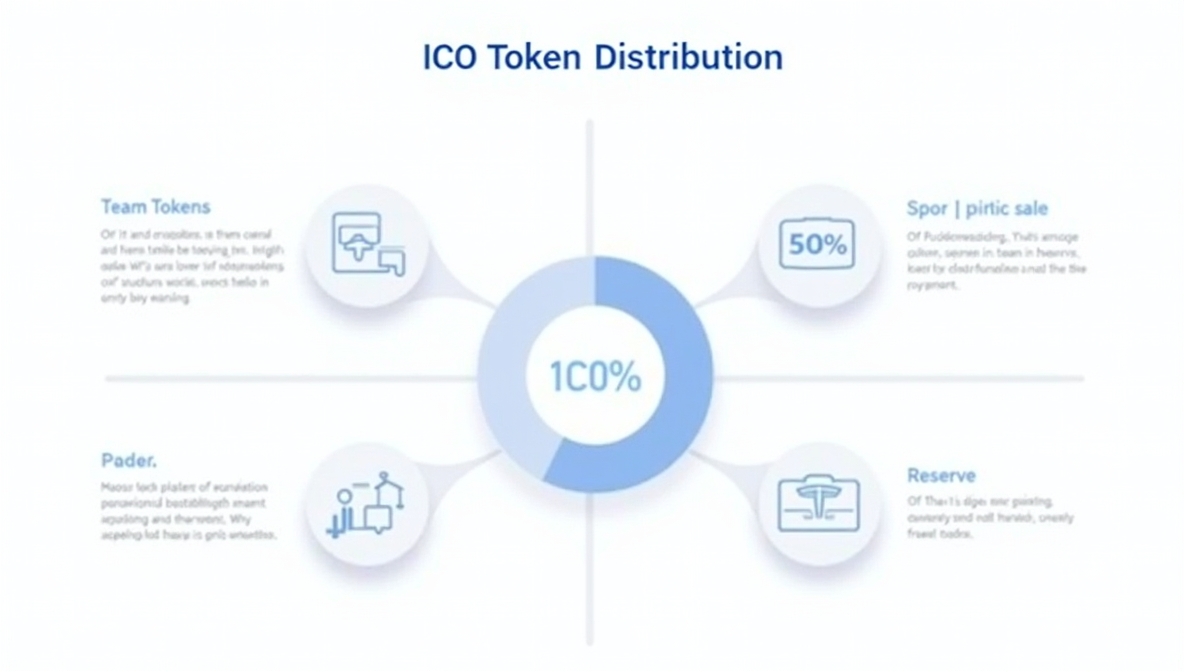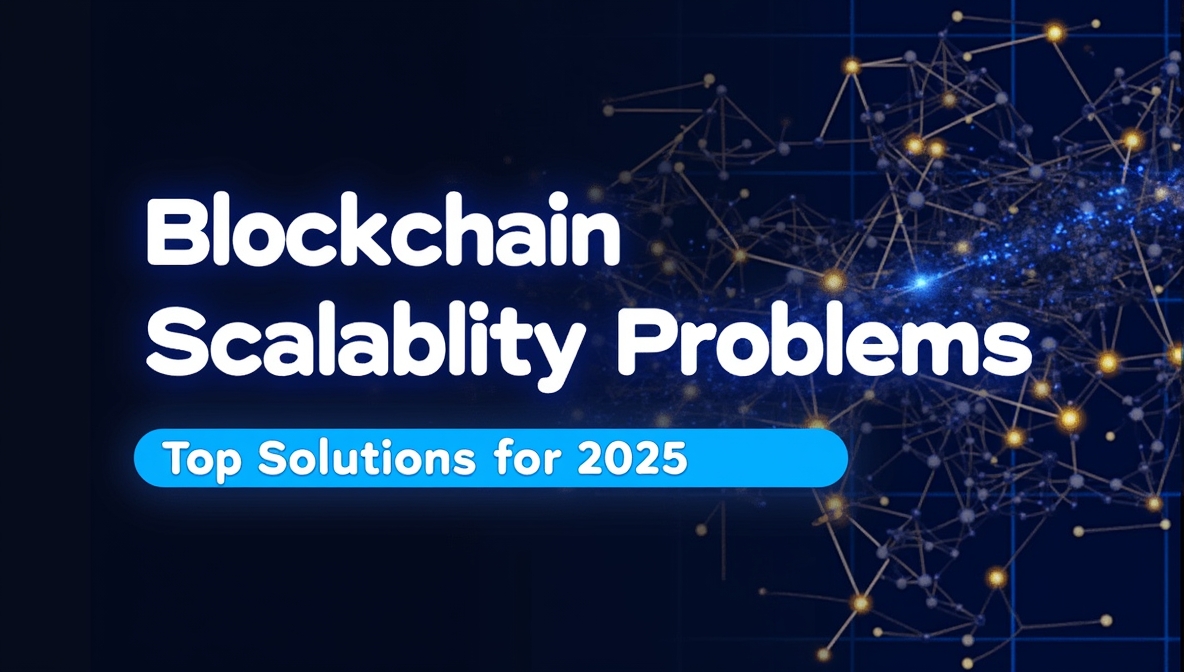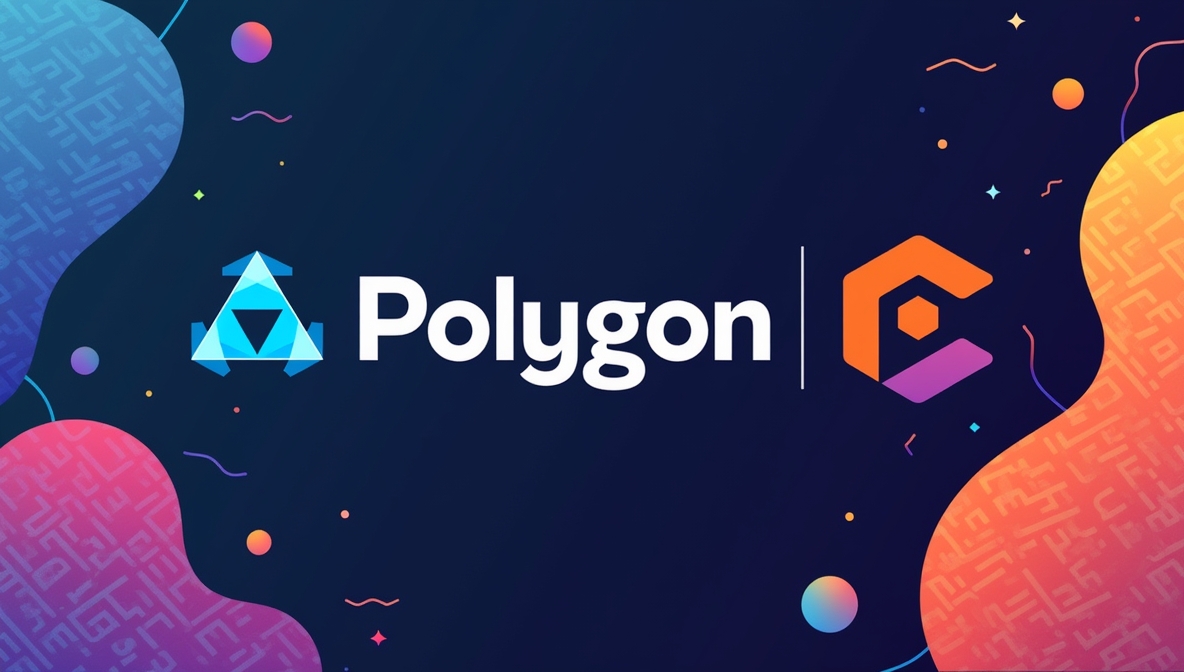Blockchain technology is reshaping industries with its promise of transparency, security, and unparalleled efficiency. From revolutionizing finance and healthcare to transforming global supply chains, the potential is enormous. But here’s the reality: without compliance, even the most innovative blockchain solutions risk failure. Legal penalties, operational disruptions, and loss of trust can dismantle progress overnight.
Regulatory compliance in blockchain isn’t just a checkbox; it’s the cornerstone of sustainable adoption and growth. Compliance ensures that blockchain projects not only meet legal requirements but also inspire trust among users, investors, and regulators. From safeguarding user data to mitigating financial crime, it touches every aspect of a blockchain venture.
This comprehensive guide takes you through the essentials of blockchain compliance, cutting through the complexity to provide actionable insights. We’ll explore global regulatory frameworks, address key challenges like AML, KYC, and data privacy, and introduce practical strategies to integrate compliance into your projects. Whether you’re a startup founder, a seasoned blockchain developer, or a business leader exploring blockchain’s potential, this guide is designed to equip you with the knowledge and tools to navigate the ever-changing regulatory landscape.
Here’s what we’ll cover:
- What is Blockchain Regulatory Compliance? Breaking down the concept and why it’s critical for the success of blockchain projects.
- The Global Compliance Landscape: A closer look at the fragmented regulatory environment across jurisdictions like the U.S., EU, and Asia-Pacific.
- Key Compliance Challenges: Navigating the tension between blockchain’s transparency and privacy laws, smart contract enforceability, and taxation complexities.
- Emerging Solutions and Technologies: From RegTech tools and decentralized identity solutions to privacy-enhancing technologies, discover how innovation is tackling compliance challenges.
- Actionable Compliance Strategies: Practical steps to future-proof your blockchain projects, including proactive risk assessments, audits, and compliance automation.
The world of blockchain compliance is dynamic and complex, requiring continuous adaptation to evolving laws and standards. However, with the right strategies and a forward-thinking approach, regulatory compliance can transform from a challenge into a competitive advantage. By prioritizing compliance, you’re not just mitigating risks—you’re building the foundation for long-term success, fostering trust, and positioning your project for global adoption.
Let’s embark on this journey to master blockchain regulatory compliance and unlock its full potential for a secure, transparent, and innovative future.
Decoding Blockchain Regulatory Compliance

Let’s get straight to the point: what exactly is blockchain regulatory compliance? Simply put, it’s playing by the rules. In the blockchain world, this means adhering to all relevant laws, regulations, and guidelines in every jurisdiction where you operate. From safeguarding user data to preventing financial crime, compliance touches every aspect of your blockchain venture.
Blockchain Compliance Defined
Regulatory compliance, specifically for blockchain, is about operating your blockchain activities within the legal guardrails set by governing bodies. It’s more complex than traditional compliance because blockchain is decentralized and often operates across borders. Unlike old-school systems with central control, blockchain’s distributed nature throws a curveball at jurisdiction, data management, and accountability. Therefore, effective blockchain regulatory compliance demands a forward-thinking, flexible strategy that acknowledges blockchain’s unique DNA.
Think about a blockchain system managing a global supply chain. Compliance isn’t just about one country’s rules. You’re juggling data privacy laws, customs rules, and trade regulations from every corner of the world involved in that chain. This global scale adds layers of complexity that old compliance models just weren’t built for.
Why Blockchain Compliance Regulations Matter
Compliance isn’t just ticking boxes; it’s the foundation for blockchain’s widespread acceptance. In critical sectors like finance, healthcare, and supply chains – where trust and security are paramount – blockchain compliance regulations are absolutely essential. Without solid compliance, blockchain’s game-changing benefits – transparency, security, efficiency – are overshadowed by legal risks and uncertainty. It’s like building a skyscraper on sand.
Consider finance. Blockchain’s potential to revolutionize payments, trading, and lending is massive. But financial institutions are under intense regulatory scrutiny, especially for AML and KYC. Blockchain finance solutions must prove they comply to gain traction and avoid crippling penalties. FinCEN’s report on a $24 million fine for a non-compliant virtual currency exchanger is a stark reminder of the financial devastation of ignoring compliance.
The downfall of BitMEX, a major crypto exchange penalized by the CFTC and DOJ for operating illegally and violating AML rules, serves as a chilling example. More recently, in November 2023, Binance and its CEO, Changpeng Zhao, pleaded guilty to federal charges, resulting in a $4.3 billion fine and Zhao’s resignation. This underscores the absolute necessity of robust regulatory compliance of blockchain. On the flip side, Coinbase’s early commitment to compliance, working hand-in-hand with regulators, has built trust and facilitated wider adoption, showcasing the immense advantages of prioritizing blockchain compliance regulations.
Healthcare is another prime example. Blockchain can revolutionize secure patient data management. But strict data privacy laws like HIPAA and GDPR demand ironclad data protection. Healthcare blockchain apps must be “privacy-by-design” and fully compliant to earn patient trust and legal clearance. Compliance failures here mean huge fines and reputational ruin, stifling blockchain’s potential in this vital field.
Blockchain Compliance: A New Ballgame
Blockchain compliance isn’t just applying old rules to new tech. It’s a complete paradigm shift. Blockchain’s decentralized and transparent nature forces us to rethink traditional compliance. Old compliance models rely on central gatekeepers and top-down control. Blockchain, by design, spreads control and data across the network, shattering those old models.
Decentralization: Redefining Accountability
Decentralization, blockchain’s core principle, means no single entity is in charge. This raises critical questions about compliance accountability. Who ensures AML compliance on a decentralized exchange? How do you enforce data privacy when data is everywhere? These are brand new questions that traditional compliance frameworks are struggling to answer.
Transparency: Balancing Visibility and Privacy
Transparency, another blockchain hallmark, adds another layer. While transparency boosts accountability, it also sparks data privacy concerns, especially with sensitive data on public blockchains. The tightrope walk between transparency and data privacy is a defining challenge in blockchain compliance.
Immutability: Security vs. Data Governance
Data immutability, great for security and audits, becomes a headache for data rectification and GDPR’s “right to be forgotten.” Once blockchain data is written, it’s practically unerasable. This immutability demands careful consideration of what data goes on-chain and how it aligns with data privacy mandates.
The Need for Innovative Compliance Strategies
Addressing these challenges demands innovative compliance strategies that embrace blockchain’s unique characteristics rather than working against them. Solutions like privacy-enhancing technologies (e.g., zero-knowledge proofs), decentralized identity systems, and advanced RegTech tools are emerging as critical components in navigating this new regulatory landscape. These approaches aim to preserve blockchain’s strengths—decentralization, transparency, and immutability—while mitigating its inherent compliance risks.
Navigating Key Blockchain Compliance Challenges

The regulatory framework for blockchain is no walk in the park. Several major hurdles complicate the path to compliance, stemming from blockchain’s groundbreaking nature, decentralization, and global reach. Understanding these challenges is your first crucial step toward building bulletproof compliance strategies.
Global Regulatory Fragmentation: A Compliance Nightmare
One of the biggest headaches in blockchain regulatory compliance is the sheer fragmentation of global regulations. Unlike established industries with relatively consistent international rules, blockchain regulations are still in their infancy and wildly inconsistent across countries. This regulatory patchwork creates a compliance nightmare for global businesses.
The US, for example, uses a multi-agency approach – the SEC, CFTC, FinCEN, and IRS all have a piece of the pie. The EU is aiming for more unity with MiCA, but individual countries still have their own rules. Asia-Pacific is a mixed bag – Singapore and Japan are relatively progressive, while China is highly restrictive, banning crypto trading and mining.
This fragmentation forces a country-by-country compliance approach. You need deep legal due diligence in every jurisdiction you operate in. What’s compliant in one place might be illegal in another. This skyrockets compliance costs and burdens, especially for startups and smaller players.
Regulatory arbitrage becomes a serious temptation. Companies might be tempted to set up shop in lax jurisdictions, potentially undermining the entire blockchain ecosystem’s integrity. International cooperation and harmonization of blockchain compliance regulations are vital to fix this fragmentation and level the playing field.
AML & KYC in Decentralized Blockchain Systems
AML and KYC regulations are the cornerstones of global financial compliance. They’re designed to stop money laundering and terrorist financing by requiring financial firms to verify customer identities and monitor transactions for red flags. But applying AML and KYC to decentralized blockchain systems is a major challenge.
Traditional AML/KYC relies on central intermediaries – banks, payment processors – to handle identity verification and transaction monitoring. Decentralized systems lack these central gatekeepers, blurring the lines of AML/KYC responsibility. Decentralized exchanges (DEXs), for instance, operate without central control, making traditional KYC enforcement tricky.
Privacy-focused cryptos and dApps further complicate AML/KYC. They prioritize user anonymity, making it hard to link transactions to real-world identities. Regulators are wrestling with how to balance AML/KYC needs with blockchain’s privacy features.
Despite these hurdles, AML/KYC is non-negotiable for many blockchain applications, especially in finance. Solutions are emerging – blockchain-based KYC and decentralized identity (DID) – aiming to boost identity verification in a privacy-preserving, decentralized way. RegTech firms are also developing AI-powered tools to monitor blockchain transactions for suspicious activity, detecting money laundering patterns.
Data Privacy vs. Blockchain’s Transparency
Blockchain’s inherent transparency, often hailed as a benefit, clashes head-on with strict data privacy laws like GDPR and others worldwide. GDPR gives individuals powerful rights over their personal data – access, rectification, erasure, and restriction. Reconciling blockchain’s transparency with these rights is a tough balancing act.
Public Blockchains and GDPR Challenges
Public blockchains are immutable and transparent, which complicates compliance with GDPR’s “right to be forgotten.” Once data is recorded on a public ledger, deletion becomes nearly impossible, raising significant privacy concerns.
Private and Permissioned Blockchains
Private blockchains offer more control over data and align better with privacy laws. To ensure compliance, they must integrate privacy principles such as data minimization, purpose limitation, and robust security from the start.
Privacy-Enhancing Technologies (PETs)
Privacy-enhancing technologies (PETs) are being developed to address the tension between blockchain’s transparency and privacy laws. These cutting-edge tools are emerging as potential solutions to bridge the gap:
- Zero-Knowledge Proofs (ZKPs): ZKPs allow one party to prove the validity of information without revealing the information itself. For instance, a bank could use ZKPs to demonstrate compliance with AML regulations without exposing sensitive transaction details. This capability makes ZKPs a game-changer for balancing privacy and regulatory transparency.
- Homomorphic Encryption and Secure Multi-Party Computation: These advanced cryptographic methods allow computations and analysis to be conducted on encrypted data, ensuring that raw data remains secure and private throughout the process.
- Data Off-Chain Solutions: Storing sensitive personal data off-chain while recording only encrypted references or hashes on the blockchain allows organizations to achieve GDPR compliance without compromising the integrity of the blockchain.
Although these technologies show promise, they are still maturing and not yet widely adopted.
Expanding Global Privacy Regulations
Beyond GDPR, laws like the California Consumer Privacy Act (CCPA) and other national data protection acts add to the complexity of blockchain compliance in data privacy. CCPA, for example, gives consumers rights over their personal data, including the ability to access and opt out of data sharing. These varying regulatory frameworks require organizations to develop adaptable privacy-by-design strategies to ensure compliance across multiple jurisdictions.
To address this tension, businesses should embed privacy-by-design, adopt PETs, and minimize on-chain sensitive data. While the balance between transparency and privacy is challenging, innovative strategies can enable compliance, fostering trust and unlocking blockchain’s full potential.
Smart Contract Legal Standing
Smart contracts, self-executing agreements on blockchains, are transforming industries by automating processes and reducing inefficiencies. However, their legal enforceability remains a subject of debate and regulatory ambiguity.
Challenges with Traditional Contract Law
Traditional contract law is grounded in centuries of precedent, yet smart contracts challenge these norms by being code-based and self-executing. Key questions arise:
How will courts interpret the code as a contract?
Which jurisdiction governs disputes in decentralized systems?
What legal remedies exist for errors or breaches?
Varying Jurisdictional Approaches
Some jurisdictions are updating existing laws to accommodate smart contracts, while others are drafting blockchain-specific legal frameworks. This fragmented approach creates uncertainty for businesses relying on smart contracts.
Immutability: A Double-Edged Sword
Smart contracts are immutable, ensuring tamper-proof and predictable execution. However, this also means errors in the code are difficult to fix after deployment, which can lead to costly disputes or operational risks. Rigorous audits and testing are critical to minimizing such risks.
A Promising Future
Despite the legal uncertainties, smart contracts are gaining traction in industries such as DeFi and supply chain management. As the blockchain ecosystem matures, clearer regulations are expected to provide businesses with greater confidence in their adoption.
Taxation & Crypto Reporting Headaches
Cryptocurrencies and blockchain assets have unleashed a wave of complexity in taxation and financial reporting. Governments worldwide are scrambling to classify and tax these new assets, resulting in a chaotic mix of tax rules and reporting demands.
Cryptocurrency tax classification varies wildly. Some countries treat them as currencies, others as property, commodities, or securities. This classification dictates the tax rules – capital gains, income tax, VAT, etc.
Crypto reporting requirements are also in flux. Tax authorities are demanding more transparency on crypto holdings and transactions to ensure tax compliance. Exchanges and crypto services are under pressure to implement KYC and transaction reporting.
DeFi and other complex blockchain financial instruments further muddy the waters. DeFi protocols involve intricate transactions and yield-generating activities, making it incredibly difficult to pinpoint taxable events and calculate liabilities. Tax authorities are still playing catch-up, developing guidance for DeFi’s unique tax challenges.
If you’re dealing with cryptos and blockchain assets, navigating this tax minefield is crucial. Meticulous transaction records, understanding jurisdictional tax rules, and seeking expert tax advice are essential for blockchain compliance in taxation and reporting.
For more information, read our article on Tokenization & Tax Regulation: A Strategic Guide.
Global Regulatory Frameworks for Blockchain: A World Tour
To truly conquer the regulatory framework for blockchain, you need to understand the specific approaches taken by key regions globally. Let’s take a world tour of the regulatory landscape in the US, EU, Asia-Pacific, and the Middle East, highlighting critical regulations and emerging trends.
United States: The Multi-Agency Maze
The US takes a multi-agency approach to blockchain regulatory compliance. No single federal body oversees everything. Instead, the SEC, CFTC, FinCEN, and IRS divide regulatory responsibilities based on their mandates.
SEC Rules for ICOs & Tokenized Assets
The Securities and Exchange Commission (SEC) is a major player in regulating ICOs and tokenized assets in the US. The SEC’s primary concern is whether a token is a “security” under US securities laws. If it is, it’s subject to registration and other securities regulations.
The Howey Test: Defining Securities in Blockchain
The SEC leans heavily on the Howey Test, from the Supreme Court’s SEC v. W.J. Howey Co. case, to determine if a token sale is a security. The Howey Test defines a security as an investment contract if it involves:
- Investing money
- In a common enterprise
- Expecting profits
- Derived from others’ efforts
Applying Howey to blockchain projects is complex and case-by-case. The SEC has issued guidance and enforcement actions to clarify its stance on different tokens and ICOs. Utility tokens, providing platform access, might not be securities if genuinely functional and not marketed as investments. However, tokens promising future profits are highly likely to be deemed securities.
State-Level Regulation: New York’s BitLicense
Beyond federal rules, state regulations significantly impact blockchain regulatory compliance in the US. New York’s BitLicense, from NYDFS, is a prime example of state-level crypto regulation. It requires virtual currency businesses in New York or serving NY residents to get a license.
BitLicense imposes tough requirements: AML compliance, cybersecurity, consumer protection, and capital reserves. While aiming for clarity and consumer protection, it’s been criticized as overly burdensome and stifling innovation. Other states are also considering or enacting their own crypto regulations, creating a patchwork of state-level rules across the US.
European Union: Harmonization with MiCA
The EU has adopted the Markets in Crypto-Assets (MiCA) regulation, establishing a comprehensive framework for crypto-assets. As of December 2024, MiCA’s implementation has led to restrictions on certain stablecoins that do not meet transparency and custodial requirements, prompting major exchanges to adjust their offerings accordingly.
MiCA Regulation: A Unified EU Framework
MiCA, once fully implemented, will establish consistent rules for crypto-asset issuance and services across the EU. It covers:
- Authorization and oversight of crypto-asset service providers (CASPs)
- Crypto-asset issuer requirements, including white papers
- Stablecoin rules to manage stablecoin risks
- Measures against market abuse and for consumer protection
MiCA is poised to reshape blockchain regulatory compliance in the EU, offering a more predictable framework for crypto businesses. However, implementation timelines and specifics are still evolving, requiring businesses to stay informed.
GDPR’s Impact on EU Blockchain Data
GDPR significantly impacts blockchain regulatory compliance in the EU, especially regarding data privacy. GDPR’s strict data protection rules, including the right to be forgotten, clash with blockchain’s transparency and immutability.
EU blockchain operations must prioritize GDPR compliance. This means data minimization, valid consent, robust data security, and mechanisms for individuals to exercise GDPR rights. Privacy-enhancing technologies and privacy-by-design are crucial for navigating GDPR in blockchain applications.
For companies operating blockchain projects across both the EU and the US, juggling GDPR and SEC regulations simultaneously is a major cross-border compliance challenge. GDPR demands strict data protection and consent, while SEC rules focus on securities and investor protection. A company issuing tokenized securities to both EU and US investors must ensure its platform and token issuance comply with both GDPR’s data privacy for EU citizens and SEC’s securities rules for US investors. This often means separate data handling for EU users and token structures that meet SEC guidelines, highlighting the complexities of cross-border compliance in blockchain.
Asia-Pacific: Diverse Regulatory Landscape
Asia-Pacific presents a diverse regulatory picture for blockchain and cryptos. Some nations, like Singapore and Japan, are innovation-friendly, while others, like China, are restrictive. This reflects varying economic priorities and regulatory philosophies.
Singapore’s Payment Services Act & Sandboxes
Singapore aims to be a blockchain innovation hub, balancing innovation with risk mitigation. The Payment Services Act (PSA) regulates payment services, including digital payment tokens, covering many crypto activities.
PSA mandates licensing for digital payment token service providers, covering AML/KYC, consumer protection, and cybersecurity. Singapore also uses regulatory sandboxes, allowing firms to test blockchain solutions with regulatory support. This fosters innovation with oversight.
Japan’s FSA Crypto Exchange Regulations
Japan was early in recognizing cryptos as legal property and regulating exchanges. The Financial Services Agency (FSA) regulates Japanese crypto exchanges, requiring registration and compliance with AML/KYC, cybersecurity, and consumer protection rules.
Japan’s proactive regulation has boosted its crypto industry and made it a leading market. However, the FSA is cautious about new crypto offerings and ICOs, prioritizing investor protection.
China’s Cryptocurrency Ban
China, in contrast, has taken a highly restrictive stance, banning crypto trading and ICOs, citing financial stability, money laundering, and environmental concerns. China has also cracked down on crypto mining.
Despite the crypto ban, China is still interested in blockchain technology. The government promotes blockchain development (excluding cryptos) in various sectors. China’s approach highlights the diverse regulatory views in Asia-Pacific.
Middle East: Embracing Blockchain Innovation
The Middle East is increasingly embracing blockchain for economic diversification and digital transformation. The UAE and Saudi Arabia are actively promoting blockchain and developing supportive regulations.
UAE’s DIFC & ADGM Blockchain Frameworks
The UAE is becoming a regional blockchain hub, with free zones like DIFC and ADGM proactively regulating and fostering blockchain adoption.
DIFC and ADGM have established digital asset and crypto-asset frameworks, providing legal certainty and attracting blockchain businesses. They often use sandboxes and innovation hubs to support blockchain development. The UAE aims to be a global blockchain leader.
Saudi Arabia’s Vision 2030 & Blockchain
Saudi Arabia’s Vision 2030 plan emphasizes technology and innovation, with blockchain as a key technology. The Saudi government is exploring blockchain in finance, supply chains, and government services.
While Saudi Arabia’s blockchain regulations are still developing, the government’s innovation focus signals a positive outlook for blockchain adoption. Blockchain is expected to play a growing role in Saudi Arabia’s economic development under Vision 2030.
RegTech: Your Secret Weapon for Blockchain Compliance
Effectively navigating blockchain regulatory compliance demands smart technology. Regulatory Technology (RegTech) is your secret weapon, automating compliance, boosting efficiency, and minimizing risks in the blockchain space. RegTech is especially crucial for tackling blockchain’s decentralized and transparent nature.
AI & Machine Learning: Compliance Automation Powerhouse
AI and machine learning are RegTech powerhouses for automating blockchain compliance monitoring and reporting. AI/ML algorithms can analyze massive blockchain transaction data in real-time, spotting suspicious patterns and regulatory breaches.
For AML, AI-powered RegTech monitors blockchain transactions for money laundering indicators – unusual patterns, high-risk addresses, illicit connections. These systems generate alerts for compliance officers to investigate and proactively address AML risks.
AI/ML also automates regulatory reporting. RegTech platforms extract blockchain data and generate compliance reports in regulator-required formats. This slashes manual work, reduces errors, and ensures timely, accurate reporting.
Blockchain-Based KYC: Revolutionizing Identity Verification
Blockchain itself can revolutionize KYC and solve identity verification challenges in decentralized systems. Blockchain-based KYC solutions offer more efficient, secure, and privacy-respecting identity verification.
Self-sovereign identity (SSI) systems, on blockchain, empower users to control their digital identities. Users store verified credentials in a blockchain wallet and selectively share them. This cuts down on repeated KYC checks and enhances privacy.
Decentralized identity (DID) frameworks, often blockchain-based, standardize decentralized digital identity management. DID solutions enable interoperable, portable digital identities, simplifying KYC across blockchain platforms.
Real-Time Transaction Monitoring: Instant Threat Detection
Real-time transaction monitoring is vital for effective blockchain regulatory compliance, especially for AML and fraud prevention. RegTech provides real-time blockchain transaction monitoring for instant suspicious activity detection.
These systems analyze transaction data as it’s recorded, flagging transactions meeting risk criteria or showing anomalies. Real-time alerts enable immediate intervention, investigation, and risk mitigation.
Real-time monitoring is crucial in fast-paced crypto and DeFi, where transactions are rapid and cross-border. RegTech provides the speed and agility needed for blockchain finance.
Compliance-as-a-Service (CaaS): Expert Compliance Outsourcing
Compliance-as-a-Service (CaaS) is a rising RegTech model, offering outsourced blockchain regulatory compliance. CaaS providers offer KYC/AML, transaction monitoring, reporting, and compliance advisory services.
CaaS is cost-effective for businesses, especially startups. Outsourcing compliance lets you focus on core business while ensuring regulatory adherence.
CaaS providers use advanced RegTech tools and expertise for comprehensive compliance. They stay updated on regulations and adapt services. CaaS is invaluable for navigating complex blockchain regulatory compliance.
Open-Source Compliance Tools: Cost-Effective Solutions
The open-source community is increasingly developing blockchain compliance tools. Open-source RegTech offers a budget-friendly option, especially for startups, to access compliance tech. These transparent, community-driven tools boost efficiency and reduce the financial burden of blockchain regulatory compliance. Open-source KYC libraries and transaction monitoring tools are emerging, allowing developers to build compliance into blockchain apps. However, carefully assess the security and reliability of open-source tools to ensure they meet your specific compliance needs.
Tokenization & Regulatory Imperatives
Tokenization – representing real-world assets as blockchain tokens – is booming, with major implications for blockchain regulatory compliance. Tokenized assets range from securities and real estate to commodities and IP. Their regulatory treatment hinges on classification and legal frameworks.
Legal Landscape of Tokenized Assets
The legal classification of tokenized assets is paramount for regulatory treatment. Tokens are broadly utility or security tokens, though the lines blur, and interpretations vary.
Securities Laws & Token Classification: Utility vs. Security
Securities laws are central to blockchain regulatory compliance for tokenized assets. If a token is a security, it’s subject to securities regulations – registration, disclosure, trading restrictions.
The Howey Test is key in the US for determining if a token is a security. Factors include investment contracts, profit expectations from others’ efforts, and marketing.
Utility tokens, for platform access, might not be securities if genuinely functional and not investment-focused. But tokens marketed for profit are likely securities.
Security tokens represent ownership like stocks. They are typically subject to securities regulations, requiring registration and disclosures.
AML/KYC Compliance for Token Issuers & Exchanges
Regardless of classification, token issuers and exchanges must comply with AML/KYC. This is crucial to prevent illicit use of tokenized assets for money laundering and terrorism financing.
Token issuers must conduct KYC on token buyers, especially during initial offerings. Exchanges listing tokenized assets must also implement KYC and monitor transactions.
AML/KYC for tokenized assets can be complex, especially cross-border and on DEXs. RegTech and blockchain-based KYC systems are vital for meeting AML/KYC obligations.
Future of Blockchain Regulatory Compliance: What’s Next?
The regulatory framework for blockchain is in constant flux, evolving as the technology matures and regulators gain deeper insights. Several key trends are shaping the future of blockchain regulatory compliance, emphasizing sustainability, global cooperation, and decentralized identity.
ESG Compliance: Blockchain’s Ethical Evolution
ESG (Environmental, Social, Governance) is increasingly vital across industries, including blockchain. ESG compliance in blockchain means aligning projects with ethical, sustainable practices, addressing environmental impact, social responsibility, and governance transparency.
Blockchain’s energy consumption, particularly with proof-of-work mechanisms, raises environmental concerns. However, Ethereum’s transition to proof-of-stake in 2022 reduced its energy usage by approximately 99.95%, significantly mitigating its environmental impact.
To measure and report carbon footprint for ESG, blockchain projects can use tools tracking node/network energy use. Projects can then offset emissions via carbon credits or invest in renewables. Best practices include transparent ESG reports, stakeholder engagement, and seeking ESG certifications. The International Organization for Standardization (ISO) is developing blockchain/ESG standards to guide robust ESG frameworks.
Social responsibility in blockchain includes financial inclusion, data privacy, and ethical AI/automation. Governance transparency means clear project governance, accountability, and stakeholder involvement.
ESG compliance will become a major aspect of blockchain regulatory compliance, driven by investors, society, and regulators. ESG-focused blockchain projects will gain a competitive edge and wider adoption.
Global Regulatory Harmonization: Towards a Unified Approach
Recognizing blockchain’s global nature, cross-border regulatory collaboration is growing to harmonize blockchain compliance regulations. International bodies are fostering dialogue for consistent, interoperable frameworks.
Organizations like the Financial Action Task Force (FATF) shape global AML/CTF standards, impacting crypto regulations. The International Organization of Securities Commissions (IOSCO) enhances international securities regulator cooperation, addressing cross-border tokenized securities. These efforts are vital for a harmonized, predictable regulatory framework for blockchain, reducing fragmentation and boosting global interoperability.
Harmonization aims to reduce regulatory fragmentation, compliance burdens, and regulatory arbitrage. International blockchain compliance standards are being developed for consistency.
Cross-border collaboration is crucial for global blockchain challenges like AML, data privacy, and consumer protection. Harmonized regulations will build trust and facilitate wider blockchain adoption.
Decentralized Identity (DID): Reshaping Identity & Compliance
Decentralized Identity (DID) is gaining traction for enhanced privacy, security, and user control in digital identity. DID systems, often blockchain-based, empower users to manage their identities and selectively share credentials.
DID’s regulatory implications are profound. DID can transform KYC, enhance data privacy, and empower user data control. Regulators are exploring DID integration into regulatory frameworks for better identity verification and data governance.
DID aligns with data minimization and user consent, core to GDPR. DID can also simplify cross-border identity verification and compliance for global businesses.
As DID matures, regulations are expected to adapt and leverage DID’s benefits for blockchain regulatory compliance.
CBDCs: Navigating State-Backed Digital Currency Compliance
Central Bank Digital Currencies (CBDCs) are being explored globally. CBDCs can modernize payments, boost financial inclusion, and improve monetary policy.
CBDCs also pose unique blockchain regulatory compliance challenges. As state-backed currencies, CBDCs must comply with financial regulations – AML/KYC, data privacy, consumer protection. However, CBDC centralization raises data privacy and surveillance concerns.
Regulators are designing CBDCs to balance digital currency benefits with compliance and data privacy. CBDC regulatory frameworks are evolving, with pilot projects testing different models and compliance approaches.
DAOs: Regulatory Frontiers for Decentralized Governance
Decentralized Autonomous Organizations (DAOs) are a new form of blockchain governance, operating via smart contract rules, not hierarchies. DAOs present unique blockchain regulatory compliance challenges due to their decentralization and borderless nature. Legal jurisdiction, liability, and accountability in DAOs are complex. Regulators are developing DAO frameworks, focusing on entity classification, taxation, and investor protection. Some jurisdictions explore legal structures for DAOs, others apply existing rules. DAO regulatory uncertainty demands caution, transparency, member education, and legal counsel engagement.
Quantum Computing: Long-Term Compliance Security
Looking ahead, quantum computing poses a potential paradigm shift in blockchain regulatory compliance. Quantum computers could break current blockchain cryptography, threatening data security. The blockchain industry is exploring quantum-resistant cryptography in anticipation. Future blockchain compliance regulations may mandate quantum-resistant algorithms for long-term blockchain security and trustworthiness. Proactive adaptation to quantum computing is crucial for future-proof blockchain regulatory compliance.
Decentralized Finance (DeFi) will also heavily influence future regulations. DeFi’s rapid growth and complex, cross-border protocols are forcing regulators to adapt fast. Future DeFi regulations will likely focus on investor protection, AML compliance for DEXs, and systemic DeFi risks. Regulators face the challenge of fostering DeFi innovation while mitigating risks and ensuring market integrity, leading to a dynamic and evolving regulatory framework for blockchain.
Expert Insights: Pro Tips for Blockchain Compliance Success
Want to get ahead of the curve in blockchain regulatory compliance? Here are some expert insights to set you on the path to success:
- Start with a Robust Risk Assessment: Don’t guess – know your regulatory landscape. A thorough risk assessment is non-negotiable. Identify every applicable regulation based on your project’s specifics, industry, and global footprint. Data privacy (GDPR, CCPA), financial regulations (AML/KYC, securities laws), and industry-specific rules – map them all out.
- Invest in Top-Tier Legal Counsel – Early: Don’t wait for legal fires to erupt. Engage blockchain-savvy legal experts from day one. Choosing the right counsel is a game-changer. Seek firms with proven blockchain experience, deep regulatory knowledge, and industry-specific expertise. Grill potential advisors: What’s their track record with similar projects? How deep is their understanding of global blockchain compliance regulations? What’s their approach to proactive, adaptable legal guidance?
- Privacy by Design is Non-Negotiable: Data privacy can’t be an afterthought. Bake it into your blockchain solution’s DNA from the start. Implement data minimization, robust security, and give users real data control.
- Go Above and Beyond on KYC/AML: Even if KYC/AML isn’t explicitly mandated yet in your jurisdiction, implement comprehensive procedures anyway. It’s not just about compliance; it’s about building trust and future-proofing your project. Leverage RegTech to automate and supercharge these processes.
- Audit, Audit, Audit – Regularly: Compliance isn’t set-it-and-forget-it. Regular audits are essential to ensure ongoing adherence and spot any compliance gaps. Make audits risk-based, but aim for at least annual audits, or more frequently if regulations or your project change significantly. Audits should cover KYC/AML, data privacy, smart contract security, and industry standards. Consider independent third-party audits for unbiased assessments of your blockchain regulatory compliance.
- Become a Regulatory Watchdog: The regulatory framework for blockchain is a living, breathing thing. You must stay informed. Set up systems to monitor regulatory updates and adapt your strategies proactively. Regulatory news alerts, industry forums, and constant communication with legal counsel are your intelligence network.
- Consider Compliance Insurance – Your Safety Net: Don’t leave your project financially exposed. Explore insurance to mitigate non-compliance risks. Blockchain insurance is emerging, covering regulatory fines, legal battles, and data breaches. Consult blockchain insurance specialists to understand coverage and integrate insurance into your blockchain regulatory compliance risk management.
Conclusion: Embrace Blockchain Compliance as a Competitive Edge
As we’ve seen, regulatory compliance of blockchain isn’t just a hurdle to overcome; it’s the very foundation for sustainable blockchain innovation. From fragmented global rules to the complexities of AML/KYC, data privacy, and smart contracts, the path to blockchain compliance is undeniably intricate. However, by proactively tackling these challenges, adopting smart strategies, and leveraging RegTech, your business can not only navigate this complex landscape but thrive within it.
The ever-shifting nature of blockchain compliance regulations demands continuous learning and adaptation. Staying ahead means constant vigilance – monitoring regulatory shifts, engaging with regulatory bodies, and proactively refining your compliance frameworks. Ignoring these changes is a recipe for legal and financial disaster, stifling innovation and eroding trust.
In essence, mastering blockchain regulatory compliance isn’t just about following rules; it’s about building unshakeable trust, fostering genuine innovation, and ensuring the long-term viability of your blockchain solutions. By making compliance a priority, you unlock blockchain’s transformative power, minimize risks, and pave the way for a more secure, transparent, and efficient future – for your business and the entire blockchain ecosystem.
Key Takeaways: Your Blockchain Compliance Checklist
- Blockchain Regulatory Compliance is Essential: It’s the foundation for sustainable blockchain adoption and trust.
- Global Regulations are Fragmented: Navigate a complex patchwork of rules jurisdiction by jurisdiction.
- AML/KYC is Critical: Implement robust procedures even in decentralized systems.
- Data Privacy is Paramount: Balance blockchain transparency with GDPR and other data privacy laws.
- Smart Contract Legality is Evolving: Exercise caution and seek legal clarity.
- RegTech is Your Ally: Leverage AI, blockchain KYC, and CaaS for efficient compliance.
- Stay Informed and Adapt: Blockchain regulations are constantly changing – continuous learning is key.
- Expert Legal Counsel is Invaluable: Engage blockchain legal specialists early and often.
- Proactive Compliance is a Competitive Advantage: Build trust, mitigate risks, and unlock blockchain’s full potential.
Ready to conquer the blockchain regulatory maze? Explore Tokenova’s comprehensive RegTech solutions and expert advisory services. Visit our website or contact us today to discover how we can empower you to master the regulatory framework for blockchain and achieve your blockchain ambitions with unwavering confidence.











